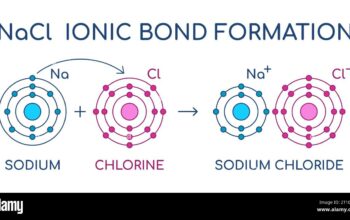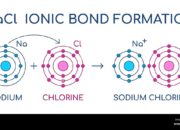Covalent bonds, often referred to as molecular bonds, constitute a fundamental aspect of chemical interactions that unveil the complex beauty of molecular structures. This term invites an intriguing exploration of the intricate dance between atoms. The very naming of these bonds evokes curiosity; they are more than mere connections—they are the essence of molecular identity. But why do we label covalent bonds as molecular bonds? This nomenclature underscores the relationship between atom connectivity and the formation of molecules, fostering a deeper understanding of chemical behavior.
To elucidate this terminology, one must first consider the nature of covalent bonds. Such bonds are formed when two atoms share one or more pairs of electrons, leading to the stabilization of both entities. This sharing occurs predominantly between non-metallic elements, where the electronegativity contrast is minimal, allowing for greater electron affinity. The result is the formation of a molecule, defined as a chemical entity consisting of two or more atoms bonded together.
In the realm of chemistry, distinction among types of bonds is pivotal. Ionic bonds, in contrast to covalent bonds, arise from the electrostatic attraction between charged ions. This fundamental difference highlights the unique characteristics of covalent bonds. This specificity is what situates covalent bonds within the broader category of molecular bonds. Additionally, the concept of a “molecule” itself is intrinsically related to covalent bonding since the majority of molecules are constituted through these interactions.
At an elementary level, the term “molecular bond” suggests a connection not merely between atoms but within a complex framework that defines molecular dynamics and reactivity. When two or more atoms share electrons—resulting in what we classify as a molecule—the nature of the bond manifests in diverse molecular geometries and properties. From the simplest diatomic molecules, like hydrogen (H₂), to intricate macromolecules like proteins and DNA, covalent bonding serves as the cornerstone of structural and functional diversity in chemistry.
The specificity of covalent bonding transcends beyond mere electron sharing, leading us to encounter hybridization and molecular orbital theory. Hybridization, the concept wherein atomic orbitals merge to create new, hybrid orbitals, challenges our conventional understanding of atomic structure. For instance, carbon exhibits sp³ hybridization in methane (CH₄), allowing for a tetrahedral formation that is critical for the stability and functionality of organic compounds. Herein lies a salient distinction: these hybridized orbitals, born from covalent interactions, are not just about bonding; they facilitate the emergence of molecular properties that govern reactivity and interactions among substances.
Furthermore, the exploration of covalent bonds as molecular bonds invites consideration of the intricate forces at play. The physical manifestations of these bonds are often measured in bond lengths and bond strengths, critical determinants of molecular stability. The presence of lone pairs and the resultant molecular shapes, as mandated by the valence shell electron pair repulsion (VSEPR) theory, contribute to the understanding of how molecules behave in various chemical environments. The bond angle and molecular polarity further illustrate that the ramifications of covalent bonding extend well beyond simple connections, offering a profound influence on molecular functionality.
The phonetic elegance of the term “molecular bond” invites a deeper perspective on how atoms interact and collaborate. In a world increasingly driven by molecular interactions, these bonds create a tapestry of complexity—from simple gases to intricate biological systems. The emergent properties resulting from covalent bonds serve as a reminder of the delicate balance that sustains life and materials alike. Take, for example, the properties of water (H₂O), whose unique hydrogen bonds, stemming from covalent interactions, dictate its status as a universal solvent and its pivotal role in biological systems.
Moreover, the nomenclature surrounding covalent bonds fosters an appreciation for interdisciplinary connections. Fields such as materials science and nanotechnology hinge on understanding molecular interactions. The precision of covalent bonding facilitates the design of innovative materials, including polymers and nanostructures, integral to advancements in technology and medicine. The implications are significant, illustrating that these “molecular bonds” are not merely theoretical concepts but practical tools for advancing our scientific and technological frontiers.
In summary, the categorization of covalent bonds as molecular bonds serves as a bridge between atomic imagination and molecular reality. This designation amplifies the understanding of chemical behavior and emphasizes the collaborative nature of atom interactions. As we unravel the intricacies of covalent bonds, we begin to appreciate the molecular world in all its complexity, cultivating a perspective that transcends beyond traditional notions of bonding. The intricate ballet of atoms sharing electrons not only defines the essence of molecular existence but also underscores the promise of future discoveries in diverse fields where molecular science reigns supreme.












